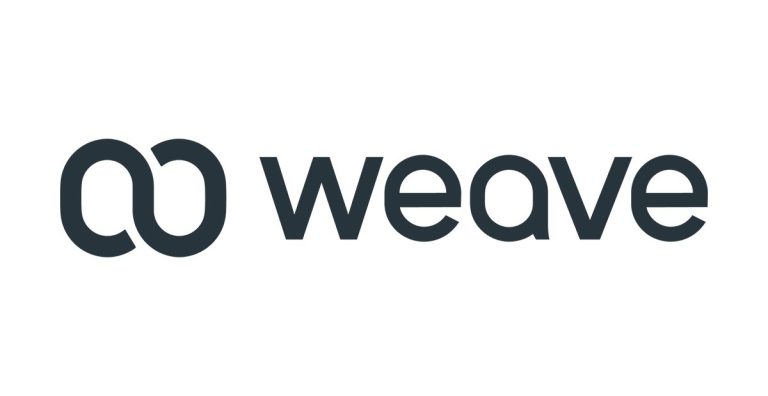
Small businesses today are increasingly reliant on technology to survive and thrive in these uncertain times. Their business operations have become increasingly digitized, to the point where many small businesses run everything from accounting to marketing, analytics and customer outreach through some kind of software application.
Software makes a big difference, but the downside of having so many apps is the complexity that comes with it. One of the most common mistakes small businesses tend to make is buying all the different tools they need from a patchwork of providers. Then they’re faced with the insurmountable problem of trying to figure out how to integrate them all.
Weave CEO Roy Banks labels this challenge as the “point solution patchwork” problem. A longtime veteran in the payments industry, Banks founded Authorize.net and served as CEO of NMI, among other accomplishments. He came out of retirement to be lead Weave and said the company aims to solve the problem through a unified platform approach.
More like this: Digital Payments Help Small Businesses Solve Back-Office Disconnects
To do that, he explained in an interview with PYMNTS’ Karen Webster, Weave has created a communications-based platform that’s heavily reliant on third-party integrations. The idea is that customers can do everything through a single platform — Weave’s — and keep things as simple as possible.
“We love to integrate with CRMs or other systems of record that are vertically-based or aligned,” Banks said. “We enhance the value of that system of record and we find that small businesses using Weave end up living inside of our platform all day long, managing scheduling appointments, sending out reminders, chatting with customers, reminding them of appointments. We rely on those integrations to tap into the whole ecosystem of what a small business needs to operate.”
Weave, which recently went public, raising $180 million in an initial public offering (IPO), has ambitions to become the de facto operating system for small businesses. It has already signed up more than 22,000 of them as its customers to date.
Weave sees itself primarily as a communications platform but also serving as a hub for the entire ecosystem of other services small businesses have become reliant upon. Banks said the company follows this approach because it believes that communications serves as the base layer of everything a small business does. Therefore, at the heart of Weave’s platform is its VoIP-based phone system that all of those other business functions revolve around.
You might like: SMB Software Company Weave Mulls IPO
“At the end of the day, when you’re a business and you need to escalate something, you’ll always pick up the phone and call someone,” Banks said. “So you have to have a phone system. We use that to drive all of the other experiences. That is the unique secret sauce to Weave, we’ve made communication an essential part of our base platform, and that separates us from all of the other back office provback-officehere.”
The integration with third-party CRMs makes it possible for communication to be at the core. One of the key features of Weave’s platform is its “Screen Pop” tool, which is like a caller ID that pops up on a computer display when an incoming call arrives. Only it’s much richer, Banks said, as it can tap into the integrated CRM to reveal a wealth of information about that caller. For example, a dentist’s receptionist can immediately see the date when the caller last came into the clinic or when their next appointment is. Weave can also tell them when the last time one of the caller’s family members came in or if they have an outstanding bill. It can even provide more personal details, for instance, if the caller’s name is Roy, but he prefers to be called Robert.
“You have all of this different information that we can provide because we have this unique capability, connected to the CRM,” Banks said.
See more: Credit Unions Mix Personal Service, 24/7 Digital Support to Win Small Business Customers
Another key advantage for Weave, and where it sees big potential, is its ability to integrate payment processing within its communications channels. Banks said Weave is perfectly positioned to manage the point of interaction between businesses and their customers, which means it can request payments and support that process even before incumbent payment platforms can do so.
One of Weave’s primary payment tools is the text-to-pay modality, which Banks said has exceeded all expectations. While he didn’t offer any concrete numbers, he insisted text-to-pay has by far the highest conversion rate of all payment methods the company supports. The reason for that is it’s just so convenient, Banks said.
Some of Weave’s customers were initially skeptical, Banks admitted. Still, whenever that happened, he would encourage them to give it a try anyway, promising them their customers would respond well. And customers have responded, overwhelmingly, Banks said, to the point that Weave claims it has been able to make a serious dent in the perennial problems of late payments and continual accounts receivable growth.
“Regardless of age, we’re seeing that people love the text prompt,” Banks said. “It is the number one way that we accept a payment today.”
Looking to the future, Banks believes Weave has a massive opportunity to continue growing as a publicly-traded entity. He said the IPO did much more than raise money. Equally important, he insisted, it raised Weave’s status through the visibility and marketability that goes with being a public company.
“There’s nothing like going public, especially when doing that on the New York Stock Exchange,” Banks said. “It really brings more credibility and familiarity about who you are and what you do, and we believe it puts us in a much better position to execute on our strategy of growth.”